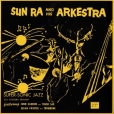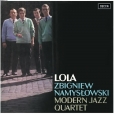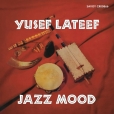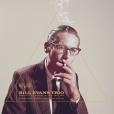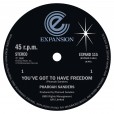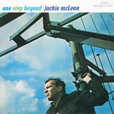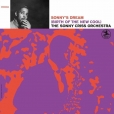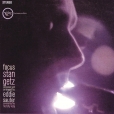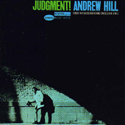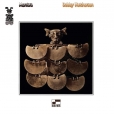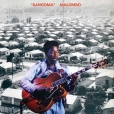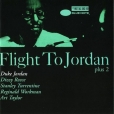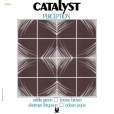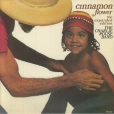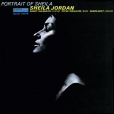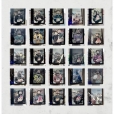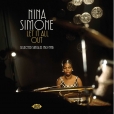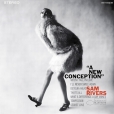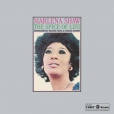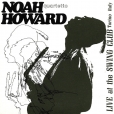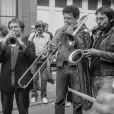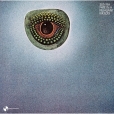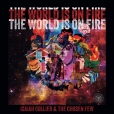Your basket is empty

From 1964, a fresh, invigorating, up-for-it, personal take on happening US jazz — Coltrane in particular — blending in themes from Polish folk music. Try the rollicking Piatawka, with its evocation of highlander bagpipes. Scorcher!
Multi-instrumentalist Namyslowski was an alumnus of Krystof Komeda’s ground-breaking quintet. In the early sixties, he formed the Jazz Rockers with Micha Urbaniak, and in 1962 both joined The Wreckers, playing the Newport Jazz Festival. In 1964 his own Modern Jazz Quartet toured throughout England, Scotland, and Wales. “We had songs like Piatawka in the programme, inspired by Polish mountain folklore… These were the forms that had never been heard there before… Not only was I a musician from behind the ‘Iron Curtain’, but it also turned out that this musician had his own voice and showed something innovatory.”
Pianist Wlodzimierz Gulgowski plays a blinder, too; nodding to both Chopin and Mal Waldron. (A decade later he hooked up with Urbaniak, for the LPs Fusion III and Funk Factory.)
Lola was recorded in London; produced by Mike Vernon, who founded the Blue Horizon label, and produced Fleetwood Mac and David Bowie, amongst others. For the cover shot, Decca commissioned the same photographer as for the first Rolling Stones LP, to follow suit. “We are in the same sweaters from Marks & Spencers, only each in a different colour.”
A gorgeous reissue of his first LP, from 1957; with Curtis Fuller, Hugh Lawson, Ernie Farrow, Louis Hayes, and Doug Watkins. Beefy, alive, and exploratory, with Lateef’s Eastern trajectory flagged already, in the thrilling argol introduction to the opener, Metaphor. On the flip, Morning is ravishing, unmissable Lateef.
Portrait In Jazz and Explorations by the almighty trio with Scott LaFaro and Paul Motian.
Sparklingly remastered, adding twenty-six alternates and out-takes, mostly unreleased; handsomely packaged.
In its full-length glory, from the great man’s 1980 LP Journey To The One; plus his version of the Marvin Gaye classic, from his 1978 LP Love Will Find A Way, with Norman Connors.
Both recordings luxuriating on 12” for the first time.
‘Classic Vinyl Series.’
Scorcher!
Just cop the opener. Such a knockout!
Six Horace Tapscott compositions and arrangements. Swirling, passionate, raging, valedictory, richly allusive music.
Teddy Edwards is here; Tommy Flanagan. Criss is on fire.
Hotly recommended. Something really special.
Of all his albums, this was Stan Getz’ favourite. Ours, too.
Freed from the formal orthodoxies of small-group bebop, and revelling in the freedoms opened up by Eddie Sauter’s thrilling strings-based arrangements, lyrical improvisation pours out of the saxophonist (with Lester Young coursing through as per). The music shimmies devil-may-care through jazz, classical, soundtrack, show-tune, and the rest.
Try the dazzling opener. A theme from Béla Bartók’s Music for Strings, Percussion and Celesta is mashed into skittering, paranoid funk, with a killer spot for Roy Haynes. And next up, something quite different, a quiet, complexly tender tribute to Getz’s mum, exquisitely proffered. Just a shame Bill Evans wasn’t sitting in.
Original, knockout; very warmly recommended.
‘Classic Vinyl Series.’
‘Montara is one of the great feel-good jazz albums of the 1970s, one of the great Latin jazz albums of the 1970s, and one of the great groove jazz records. Seek it out without hesitation.’ (AllMusic)
Last couple of copies… and we can’t get more.
‘In 1978, SA guitar genius Tabane stood at a crossroads. Fresh from three years’ touring in the United States, where he graced the Newport Jazz Festival alongside Miles, Herbie, Pharoah and co, and with a newly signed international distribution deal, he harnessed this momentum to a new, larger band setting, capturing a rare intensity.
‘Sangoma — ‘spiritual healer — bridges contradictions: expansive yet intimate, celebratory yet haunted by exile and return. Tracks like Sangoma, Hi Congo and Keya Bereka are not simply recordings but living testaments, songs that would remain in Tabane’s repertoire for decades. Unlike the moody, immersive character of much of his work, here Tabane is on the move — urgent, restless, uncontainable. ‘Maskanta wa tsamaya’, ‘ass-kicking’.
‘More than four decades on, Sangoma is both an historical document and a timeless invocation. A landmark in SA musical history. From his home in Mamelodi to the world and back again, Tabane’s spiritual healing endures — raw, electric, and unbowed.’
An expanded edition of the saxophonist’s triumphant Brazilian excursion, originally released by Douglas Records in 1977, adding half an hour of previously unissued versions, plus Meeting House, out for the first time in any form.
Transferred from the original tapes; newly remastered; decent booklet. Sound-wise, Ron Carter in particular benefits from the restoration work.
An extensive lineup also includes legends like Portinho, Dom Salvador, Bernard Purdie, Claudio Roditi…
Sod’s law that the killer cut Clove & Cinnamon sounds freer, more carnivalesque, in the original version, with Alan Douglas’ bells, rattles and whistles intact.
With Michael Smith on piano, Noel McGhie on drums, and Bob Reid on bass, in April 1974; originally released by Calumet Records.
